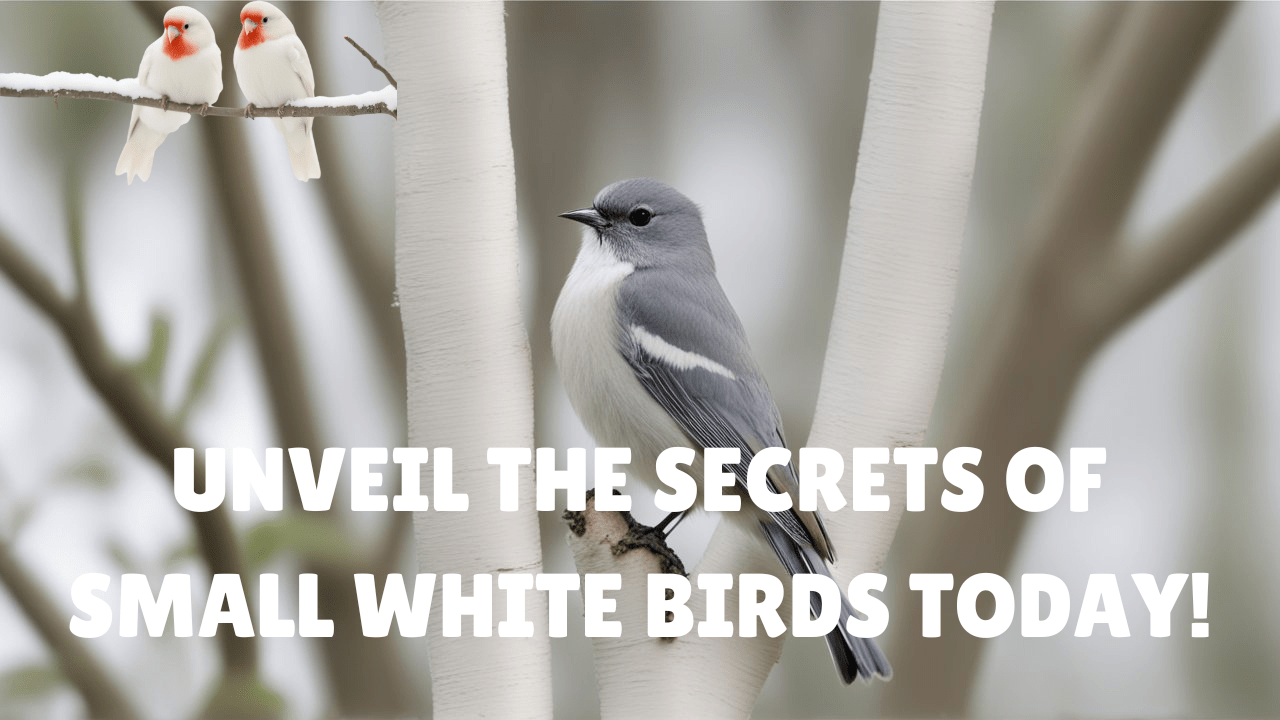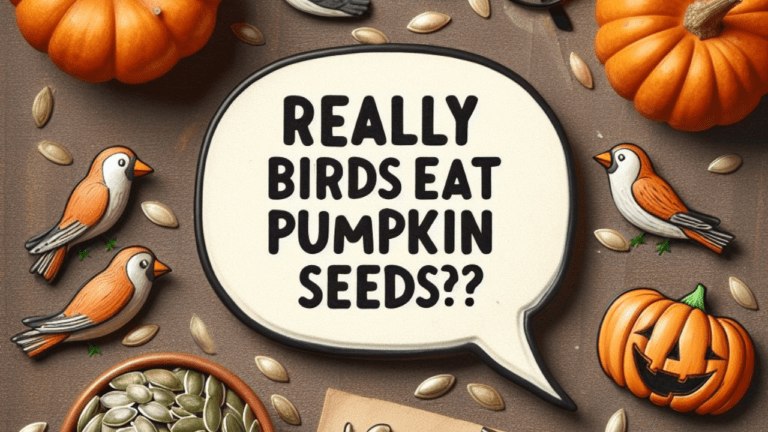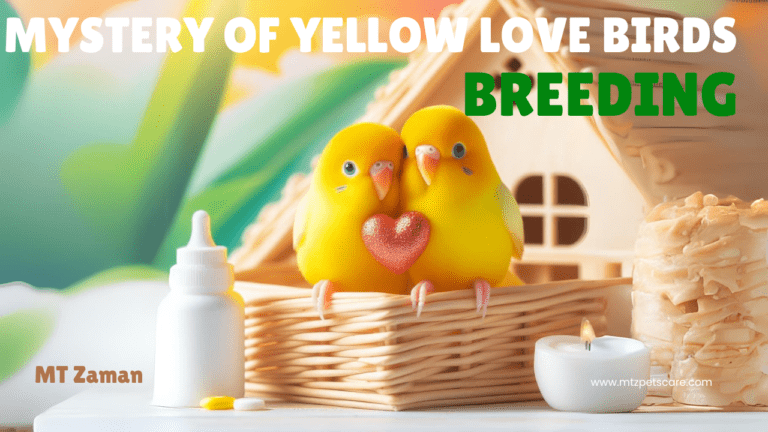When you think of birds, especially those with white feathers, what’s the first image that comes to mind? Many people envision large, majestic birds like swans or pelicans gracefully gliding across serene waters. However, there’s a whole other world of avian beauty that often goes unnoticed—the realm of small white birds.
Contrary to popular belief, not all white birds are big. In fact, there’s a delightful array of small, white-feathered creatures that flit and flutter through forests, fields, and even urban landscapes. These diminutive wonders may be small in size, but they’re big on charm and intrigue. Let’s dive into the fascinating world of small white birds and discover why they deserve our attention.
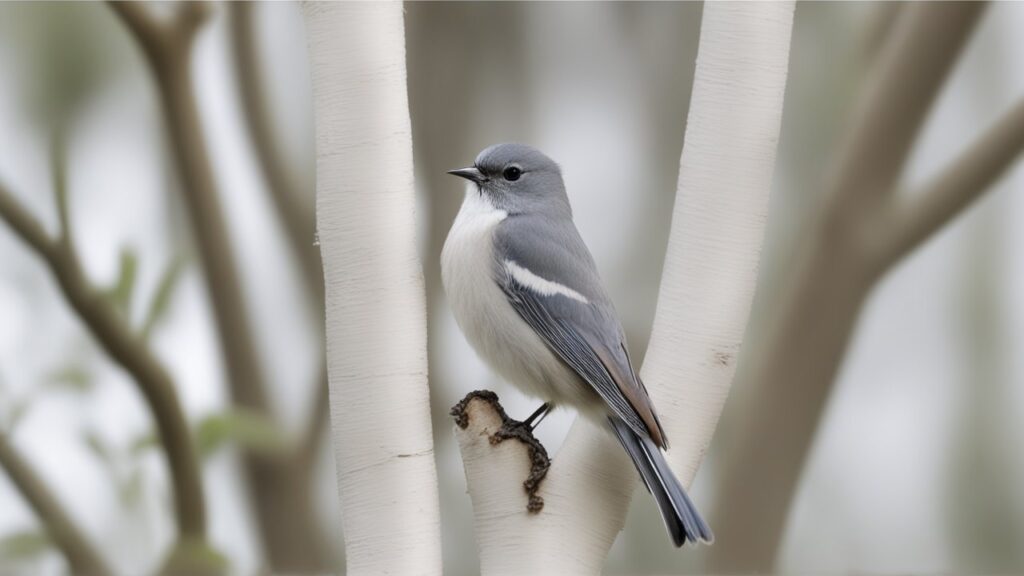
What Are Small White Birds?
Small white birds encompass a diverse group of avian species characterized by their petite size and predominantly white plumage. While they may lack the imposing stature of their larger counterparts, these birds possess their own unique allure. From tiny songbirds to delicate finches, small white bird come in various shapes and sizes, each contributing to the rich tapestry of avian life.
Exploring the Fascination
What makes small white birds so captivating? For starters, their delicate appearance and graceful movements evoke a sense of ethereal beauty. Whether observed flitting among tree branches or foraging for food on the ground, these birds exude a certain charm that’s hard to resist.
Moreover, small white birds play vital ecological roles as pollinators, seed dispersers, and insect controllers. Despite their diminutive size, they contribute to the overall health and balance of their ecosystems. By understanding and appreciating these feathered marvels, we gain a deeper appreciation for the intricate web of life that surrounds us.
Getting to Know the Species
The world of small white birds is teeming with diversity, with each species possessing its own unique traits and behaviors. From the lively chirps of chickadees to the graceful flights of swallows, there’s always something new to discover among these feathered inhabitants.
Among the most beloved small white birds are the charming sparrows, known for their cheerful songs and sociable nature. These ubiquitous birds can be found in a variety of habitats, from urban parks to rural farmlands, making them familiar sights to birdwatchers worldwide.
In addition to sparrows, other notable small white bird species include finches, warblers, and wrens, each adding their own special flair to the avian landscape. Whether you’re drawn to the melodious tunes of songbirds or the aerial acrobatics of swifts, there’s a small white bird to capture your imagination.
Appreciating Nature’s Wonders
As we delve deeper into the world of small white birds, it becomes clear that these pint-sized creatures are anything but ordinary. From their delicate beauty to their vital ecological roles, they enrich our lives in ways both subtle and profound.
So, the next time you spot a small white bird flitting by, take a moment to appreciate the beauty and wonder it brings to the world. By embracing the charm of these feathered friends, we not only enrich our own lives but also contribute to the preservation of our natural heritage. After all, when it comes to the marvels of nature, size is truly just a matter of perspective.
Dispelling Misconceptions: It’s Not All About Size
When it comes to birdwatching, many enthusiasts may overlook small white birds in favor of larger, more conspicuous species. However, dismissing these petite avian wonders would be a mistake, as they offer a wealth of beauty and intrigue waiting to be discovered. In this section, we’ll delve into the different species of small white birds, shedding light on their unique characteristics and behaviors.
Different Species of Small White Birds
Small white birds encompass a diverse array of species, each with its own distinctive features and habits. Among the most iconic members of this avian group are the white-breasted nuthatch, the snowy egret, and the white-crowned sparrow.
The white-breasted nuthatch is a charming songbird known for its distinctive black-and-white plumage and upside-down foraging behavior. Often spotted clinging to tree trunks and branches, these agile birds use their sharp beaks to probe for insects hidden beneath the bark.
Snowy egrets, on the other hand, are elegant wading birds found in wetland habitats across North America. With their snowy white feathers and graceful movements, these avian beauties epitomize the allure of small white birds.
Lastly, the white-crowned sparrow stands out with its crisp white plumage adorned with bold black markings. These vocal birds are renowned for their sweet, whistle-like songs, which fill the air with melodious tunes during the breeding season.
In addition to these species, there are countless other small white birds waiting to be discovered, from the diminutive chickadees to the dainty warblers. Each species contributes to the rich tapestry of avian life, adding its own unique charm to the natural world.
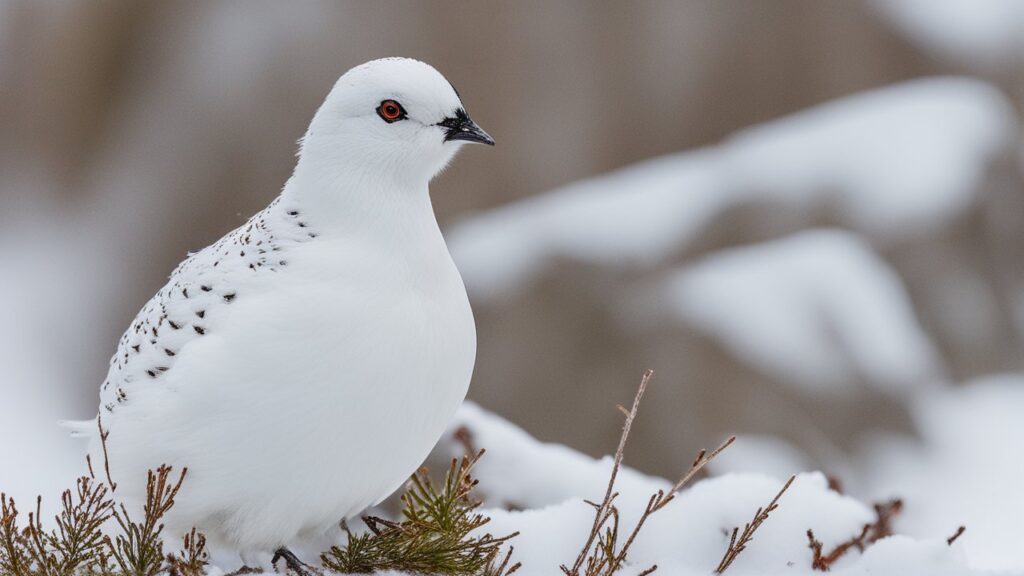
Habitats and Behaviors
Small white birds inhabit a variety of habitats, ranging from dense forests to open grasslands and urban parks. While some species prefer wooded areas with ample cover and nesting sites, others thrive in more open environments with abundant food sources.
In deciduous and mixed forests, you’ll often spot the white-breasted nuthatch flitting among branches in search of insects and seeds, while snowy egrets thrive in marshes, swamps, and shallow coastal waters, feeding on fish, frogs, and crustaceans.
Understanding the habitat preferences and behaviors of small white birds is essential for birdwatchers hoping to catch a glimpse of these elusive creatures in the wild. By exploring different habitats and observing their behaviors, bird enthusiasts can gain a deeper appreciation for the ecological roles that these birds play in their respective ecosystems.
In conclusion, small white birds may be diminutive in size, but they possess a wealth of beauty, charm, and ecological significance. From the lively antics of the white-breasted nuthatch to the graceful elegance of the snowy egret, each species adds its own unique flair to the avian landscape. By taking the time to explore the habitats and behaviors of these feathered wonders, birdwatchers can enrich their own lives while contributing to the conservation of our natural heritage.
Small White Pet Birds, Big on Personality
Contrary to popular belief, birdwatching isn’t just about spotting flashy, colorful species. In fact, some of the most captivating avian encounters can come from observing the subtle beauty and unique behaviors of small white birds. In this section, we’ll delve into the world of birdwatching tips for small white birds, offering practical advice for enthusiasts looking to enhance their avian adventures.
Birdwatching Tips for Small White Birds
To increase your chances of spotting small white birds. Visit habitats where they are known to frequent. Wooded areas, wetlands, and open fields are all prime locations to find these feathered gems.
Be Patient and Observant:
Birdwatching requires patience and keen observation skills. Take your time to scan the surroundings carefully, paying attention to any movement or sounds that may indicate the presence of birds.
Use Binoculars or a Spotting Scope:
Invest in a good pair of binoculars or a spotting scope to get a closer look at small white birds from a distance. This will allow you to observe their plumage, behavior, and other identifying features more clearly.
Learn Bird Calls and Songs:
Familiarize yourself with the calls and songs of small white birds to aid in their identification. Many species have distinct vocalizations that can help you locate them even if they’re hidden from view.
Practice Stealthy Movement:
Approach birdwatching areas quietly and avoid sudden movements that could startle the birds. By moving stealthily and blending into your surroundings, you’ll have a better chance of observing small white birds up close.
Observe Nesting Behavior:
During the breeding season, keep an eye out for small white birds engaged in nesting activities. This is a great opportunity to witness their parental care behaviors and perhaps even catch a glimpse of their adorable chicks.
Join Birdwatching Groups or Tours:
Consider joining a local birdwatching group or participating in guided birdwatching tours led by experienced naturalists. Not only will you learn from seasoned birdwatchers, but you’ll also have the chance to explore new birding hotspots and exchange tips with fellow enthusiasts.
Document Your Observations:
Keep a birding journal or use a birding app to record your sightings and observations. Documenting the small white birds you encounter can help you track their behavior patterns over time and contribute valuable data to citizen science projects.
By following these birdwatching tips, you’ll be well on your way to enjoying memorable encounters with small white birds and expanding your appreciation for the fascinating world of avian life.
